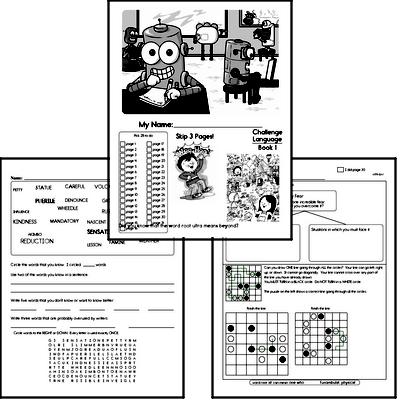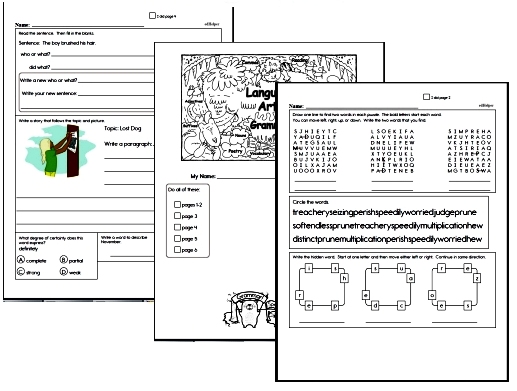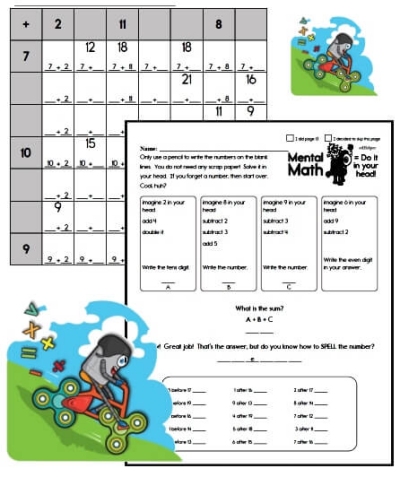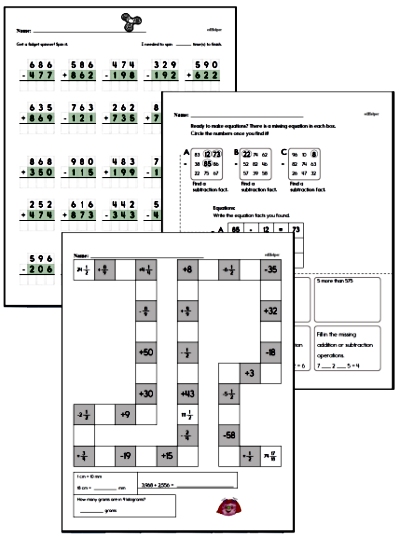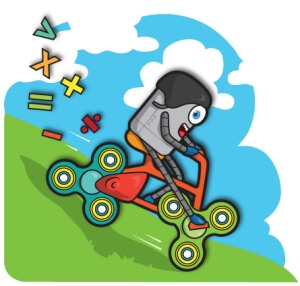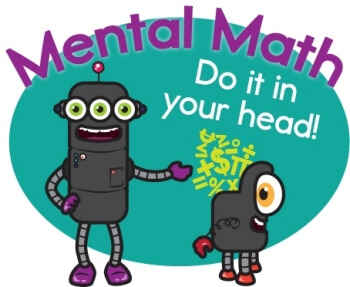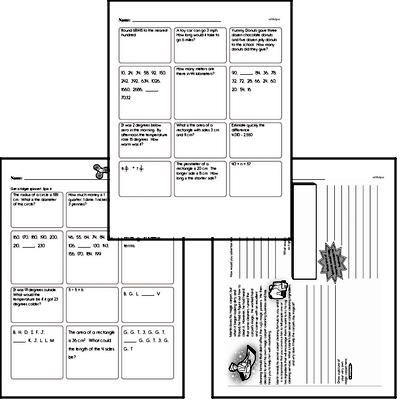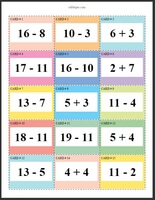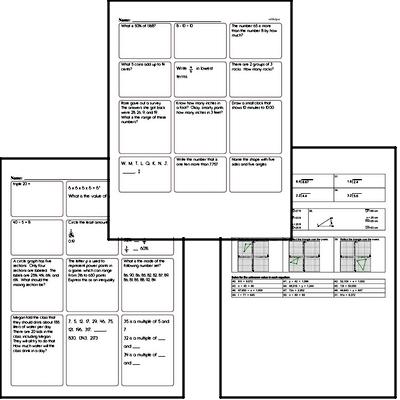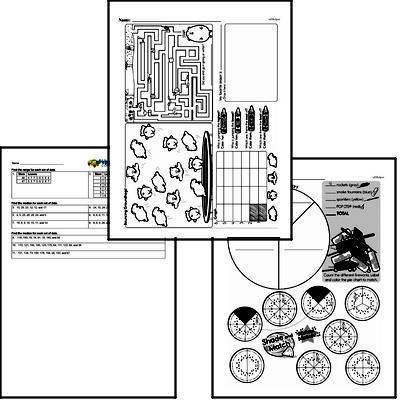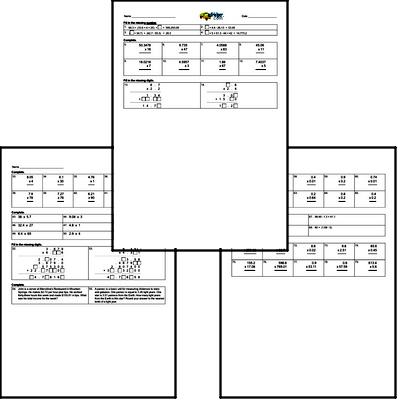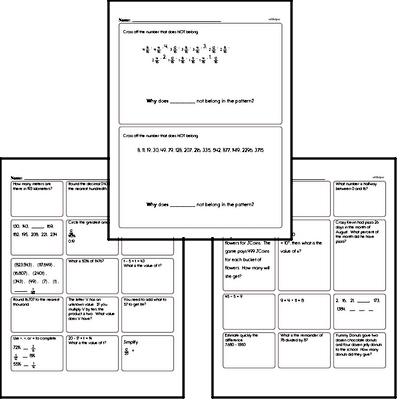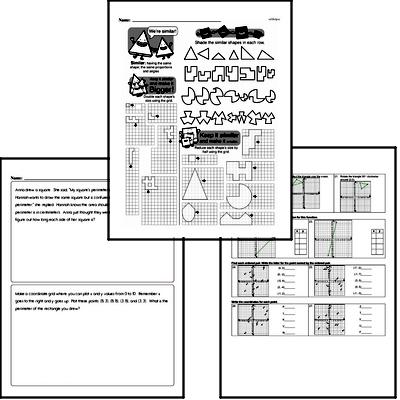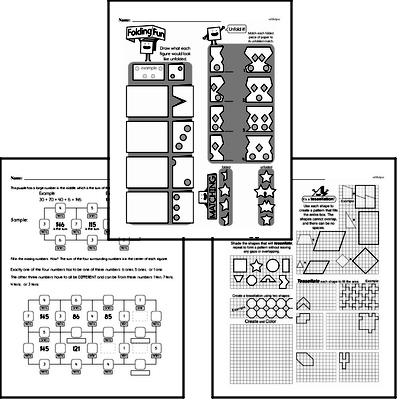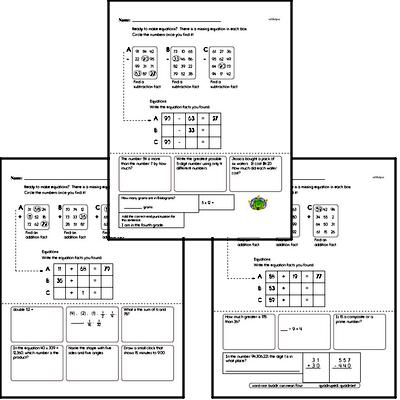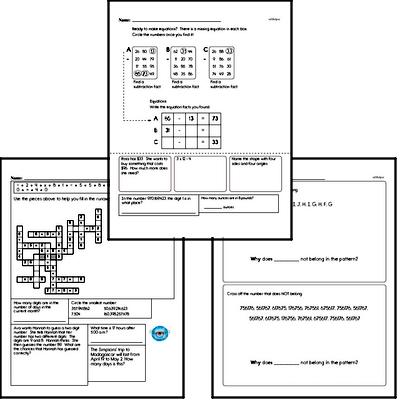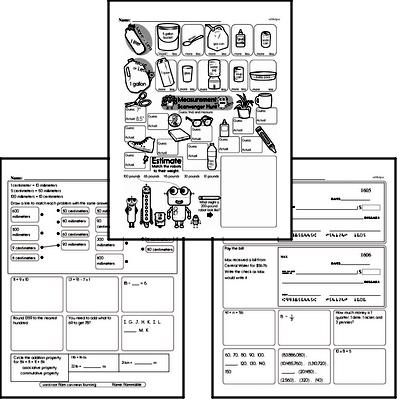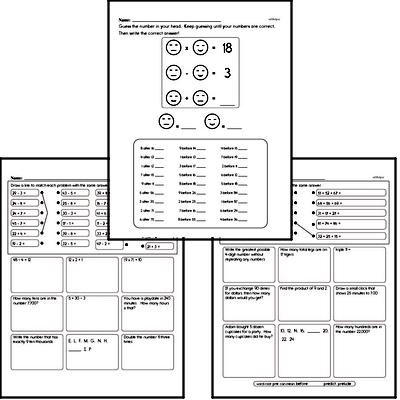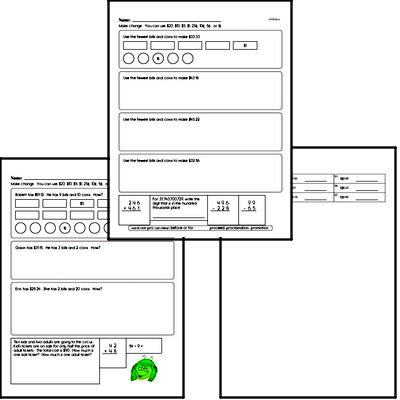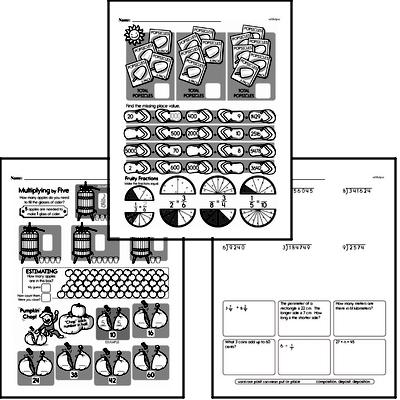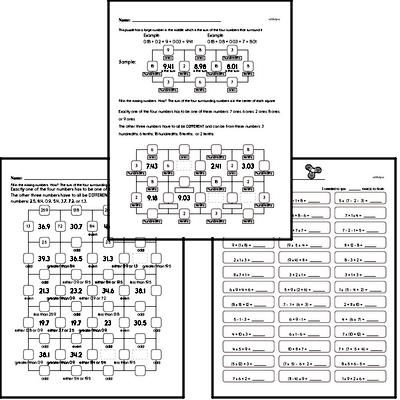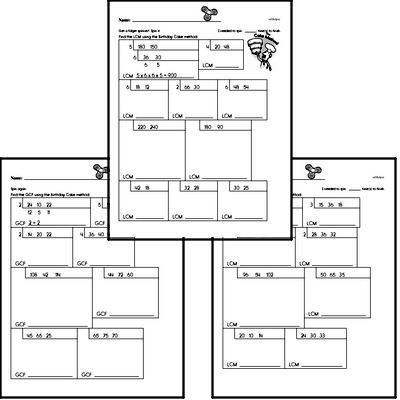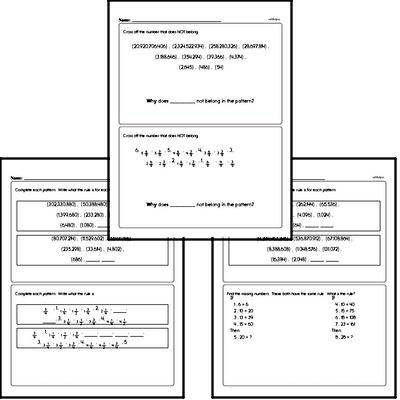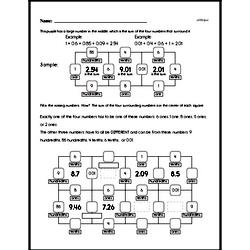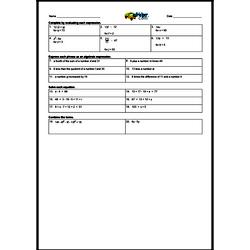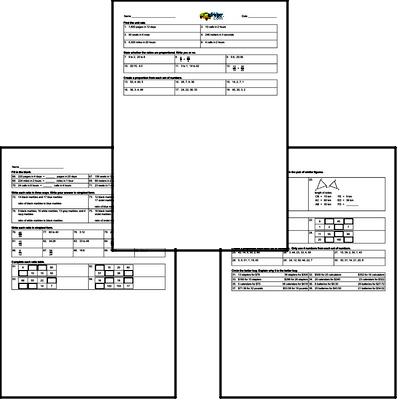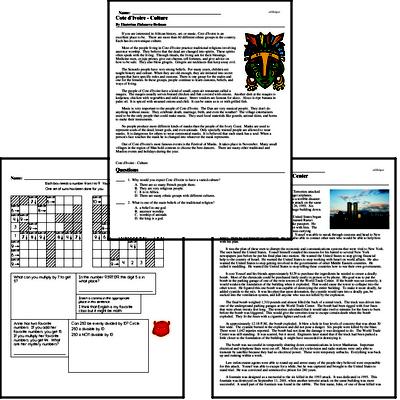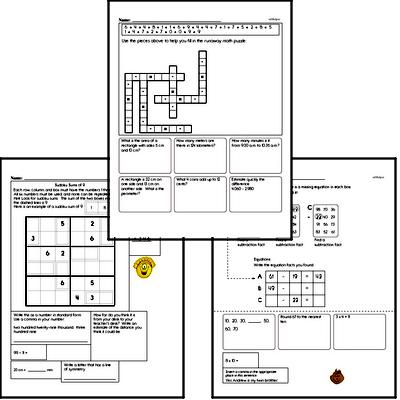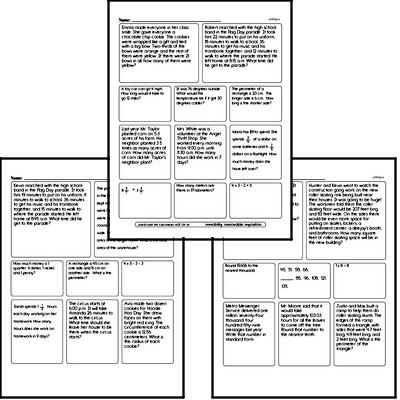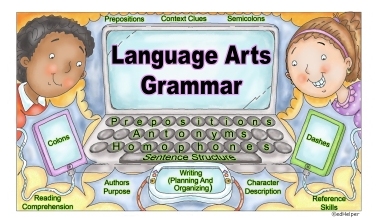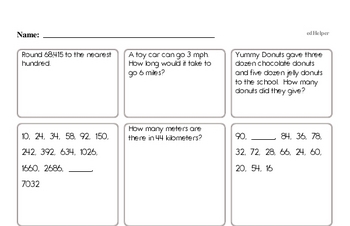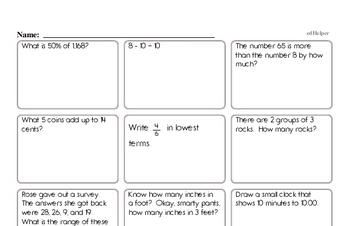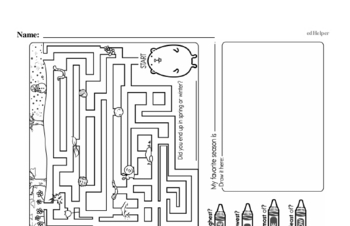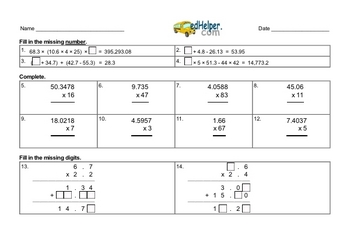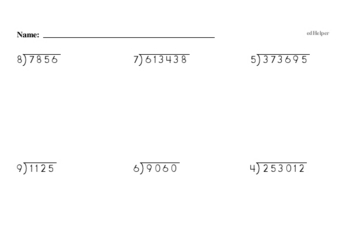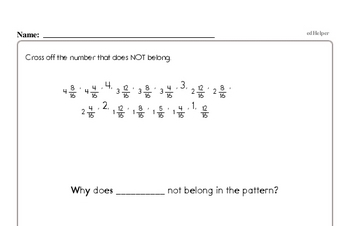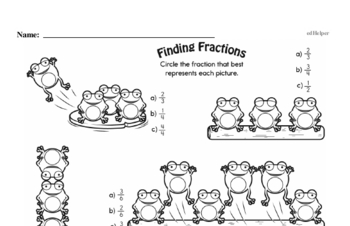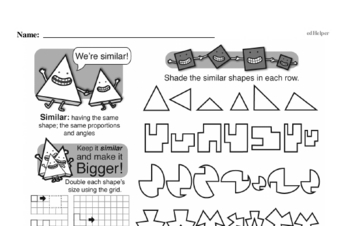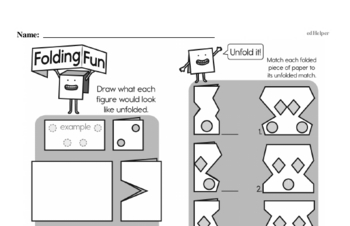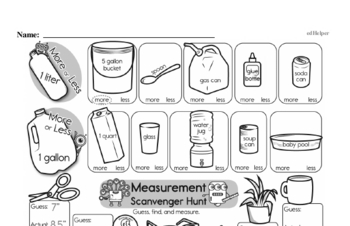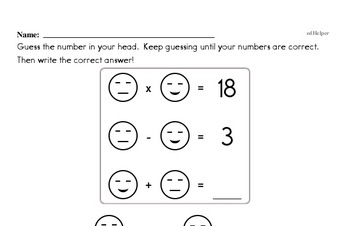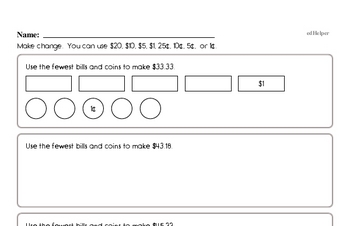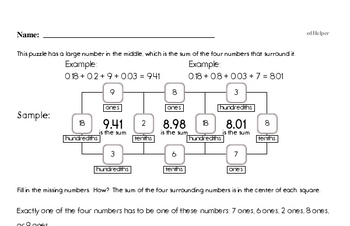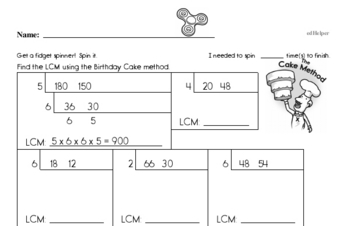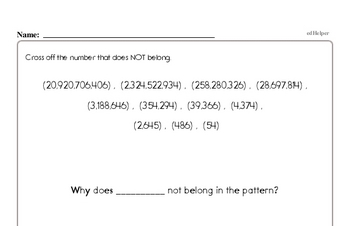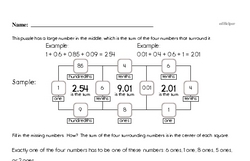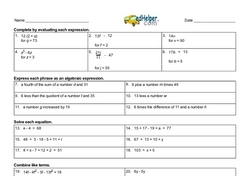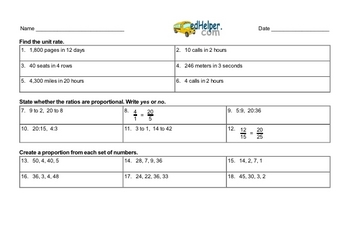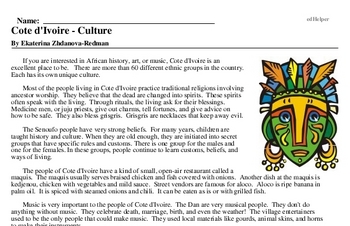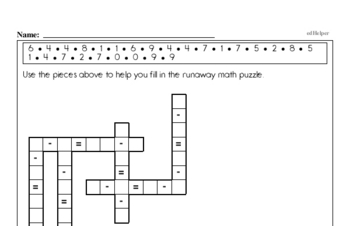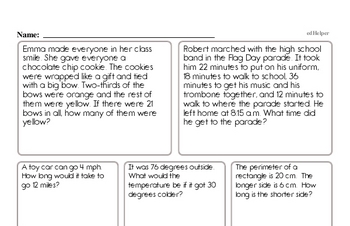Common Core and Math in Fifth Grade
In fifth grade, students will focus on three areas: develop fluency with addition and subtraction of fractions and develop understanding of the multiplication of fractions and of division of fractions in limited cases; (2) extend division to 2-digit divisors, integrating decimal fractions into the place value system; develop understanding of operations with decimals to hundredths, and develop fluency with whole number and decimal operations; and (3) develop understanding of volume.
Fifth-grade students will write and interpret numerical expressions using parentheses, brackets, or braces and evaluate expressions with these symbols.
They will generate two numerical patterns using two given rules and identify apparent relationships between corresponding terms. They will form ordered pairs consisting of corresponding terms from the two patterns, and graph the ordered pairs on a coordinate plane. They will understand the place value system; they will recognize that in a multi-digit number, a digit in one place represents 10 times as much as it represents in the place to its right and 1/10 of what it represents in the place to its left and explain patterns in the number of zeros of the product when multiplying a number by powers of 10, and explain patterns in the placement of the decimal point when a decimal is multiplied or divided by a power of 10. They will use whole-number exponents to denote powers of 10. They will read, write, and compare decimals to thousandths using base-ten numerals, number names, and expanded form and use >, =, and < symbols to record the results of comparisons. Students will use place value understanding to round decimals to any place.
Students will perform operations with multi-digit whole numbers and with decimals to hundredths and fluently multiply multi-digit whole numbers.
Students will find whole-number quotients of whole numbers with up to four-digit dividends and two-digit divisors, using strategies based on place value, the properties of operations, and/or the relationship between multiplication and division. They will illustrate and explain the calculation by using equations, rectangular arrays, and/or area models.
Students will add, subtract, multiply, and divide decimals to hundredths, using concrete models or drawings and strategies based on place value, properties of operations, and/or the relationship between addition and subtraction; they will relate the strategy to a written method and explain the reasoning used. Students will use equivalent fractions as a strategy to add and subtract fractions.
Students will add and subtract fractions with unlike denominators (including mixed numbers). They will solve word problems involving addition and subtraction of fractions referring to the same whole, including cases of unlike denominators. They will use visual fraction models or equations to represent the problem.
They will use benchmark fractions and number sense of fractions to estimate mentally and assess the reasonableness of answers. For example, they will recognize an incorrect result (2/5 + 1/2 = 3/7) by observing that 3/7 < 1/2.
Students will interpret a fraction as division of the numerator by the denominator. They will solve word problems involving division of whole numbers leading to answers in the form of fractions or mixed numbers by using visual fraction models or equations to represent the problem.
Students will apply and extend previous understandings of multiplication to multiply a fraction or whole number by a fraction.
Students will solve real world problems involving multiplication of fractions and mixed numbers by using visual fraction models or equations to represent the problem.
They will apply and extend previous understandings of division to divide unit fractions by whole numbers and whole numbers by unit fractions.
Students will solve real world problems involving division of unit fractions by non-zero whole numbers and division of whole numbers by unit fractions by using visual fraction models and equations to represent the problem.
Students will convert among different-sized standard measurement units within a given measurement system (convert 5 cm to 0.05 m) and use these conversions to solve multi-step, real world problems.
Students will represent and interpret data; for example: Make a line plot to display a data set of measurements in fractions of a unit (1/2, 1/4, 1/8).
Students will use operations on fractions to solve problems given information presented in line plots.
Students will recognize volume as an attribute of solid figures and understand concepts of volume measurement. They will measure volumes by counting unit cubes, using cubic cm, cubic in, cubic ft., and improvised units. They will relate volume to the operations of multiplication and addition and solve real world and mathematical problems involving volume. Students will graph points on the coordinate plane to solve real-world and mathematical problems.
Students will classify two-dimensional figures into categories based on their properties and understand that attributes belonging to a category of two-dimensional figures also belong to all subcategories of that category.
